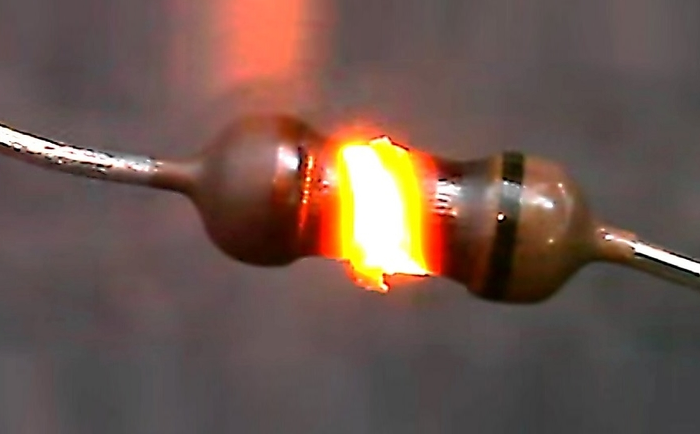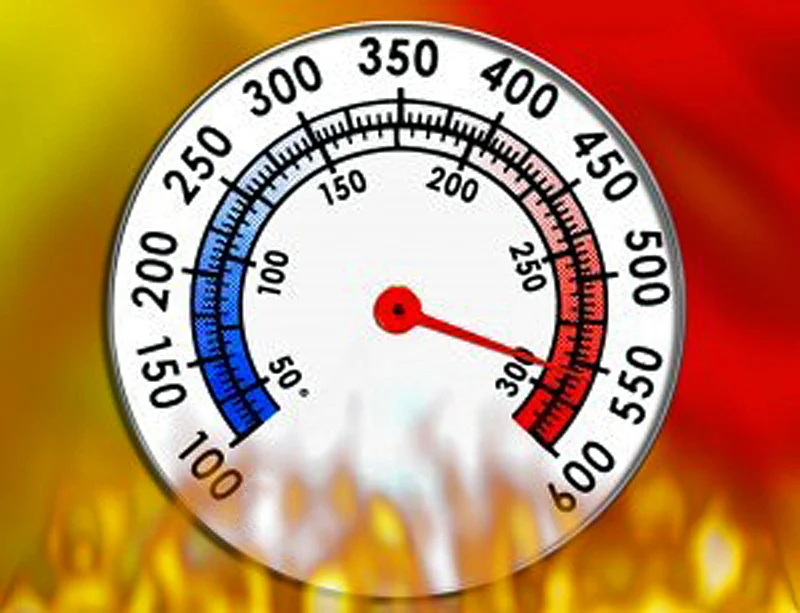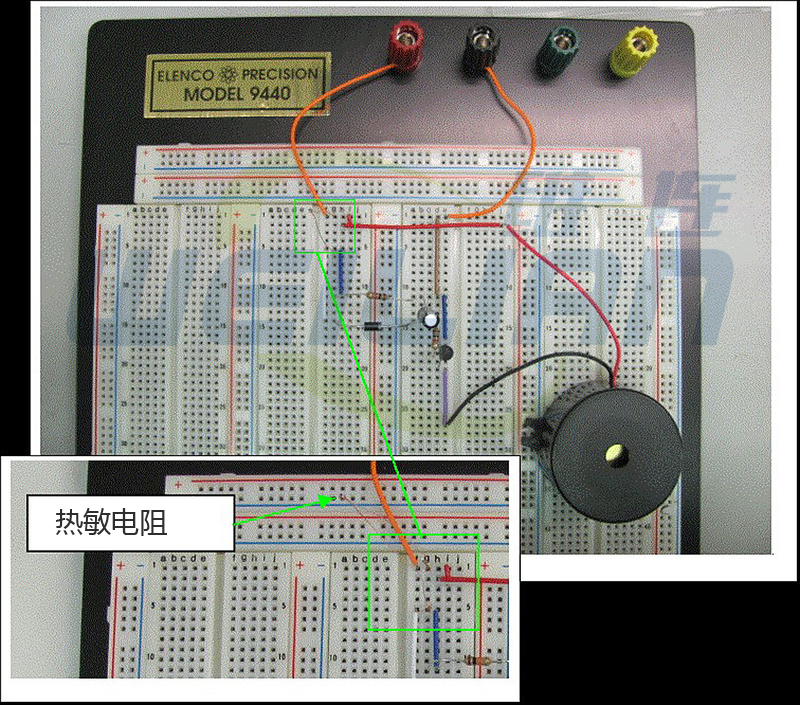
 Thermistor temperature sensor provides temperature detection in fire alarm
Thermistor temperature sensor provides temperature detection in fire alarm
Thermistors play an important role in temperature measurement. For example, thermistor temperature detection can be used for fire alarm to detect a fire based on sudden changes in temperature. Thermistors are temperature sensing elements made of semiconductor materials. Their resistance will change greatly with the small change of temperature. Unlike photodetectors or ionization alarms, thermistors require only heating to activate.
Photoelectric and ionization fire alarm
Photodetectors require smoke or fire to work properly. Smoke from the fire enters the alarm room with LED lights. The smoke then deflects the light to the photoelectric sensor, triggering an alarm. Complex circuits and required chambers increase the manufacturing price.
Although the ionization method in the fire alarm can effectively alarm the surrounding people in case of hot fire, it is also sensitive to dust or steam, resulting in false alarm. Due to so many false positives, the irritated owner will be disabled or completely removed. Disabling and removing fire alarms increases the risk of personal injury. The radioactive nature of the ionization alarm requires proper disposal when the alarm is no longer working. Just like the photoelectric detector, the circuit in the alarm device using ionization method requires complex circuits, which makes this kind of alarm device expensive. The most cost-effective fire alarm is the one using thermistor method.

Thermistor temperature detection in fire alarm
Unlike the previous example, the thermistor method uses thermal detection to activate. Once the thermistor detects high temperature, the alarm will be activated. Thermistor temperature detection does not require smoke to activate and has fewer false positives. The thermistor uses the ambient temperature of the building and is only activated when the temperature increases exponentially.
In this fire alarm example, the thermistor method is reliable because there are few false alarms and the alarm rate is faster, but the thermistor method is also universal. Another circuit that uses thermistors to measure temperature is the Wheatstone bridge.
The Multifunction of Thermistor Temperature Detection
As there are many placement options available, thermistors are widely used as temperature detectors in fire alarm examples. Thermistor fire alarm can be placed in:
● High steam area, e.g. for dairy
● Incineration and oven rooms where smoke usually accumulates
● High temperature rooms such as welding workshop
● Industrial workplaces with large amounts of dust and smoke
Through strategic placement, the thermistor method will not cause unnecessary alarms, while still reliable in industrial workplaces, to ensure that all employees can safely reach in the event of a fire threat. Thermistors can be activated at specific temperatures. Fine tuning allows for greater versatility in their placement.

Household thermistor temperature detection
The data shows the number and causes of residential fires from 2009 to 2011. The connection behind the wall socket causes about 9% of all residential fires. Although the number is relatively low, the thermistor temperature detection fire alarm is another beneficial place.
The thermistor used for temperature detection is so small that an alarm small enough to be placed behind the power socket can be manufactured. If high temperature occurs in the socket, causing fire hazard, the alarm will remind people around to turn off the power or automatically turn off the power.
Reduce the cost of thermistor alarm
Because the circuit is simple and easy to construct, it is more cost-effective to use thermistor temperature detection method to produce fire alarm. Alarms require one part to manufacture, not multiple complex parts. The thermistor contains no harmful substances and can be easily disposed when the alarm is no longer working.
The thermistor used for temperature detection is a universal and cost-effective circuit. In our fire alarm example, we have seen that they are more cost-effective due to their simple circuit, have fewer false positives due to their effective temperature detection, and are widely used due to their small size. These thermistors are essential for temperature detection, not only in fire alarm, but also in any machine that requires temperature detection. Although there are many types of temperature sensors available for this application, thermistors respond very quickly and accurately.
Working principle of thermistor temperature detection - a working example
Parts used:
9V power supply
1 k Ω resistance x2
10 µ F 16V capacitor
Bc548 transistor
1n4001 diode
100k thermistor
9V buzzer
The circuit principle diagram:

Circuit board settings
summary
The voltage continuously flows through the buzzer and thermistor. When the thermistor becomes hot, just as during a fire, the resistance drops, allowing positive voltage to pass through the thermistor, diode, and (# 2) 1 k Ω resistor. The 1k resistor regulates the voltage of the transistor to ensure proper operation. The transistor connects ground to the buzzer, which is necessary to complete the circuit. Once the positive voltage flows through the transistor, it will "turn on" to make the buzzer sound.
In the standby state, the (# 1) 1 k Ω resistor grounded the base of the capacitor and transistor, so the buzzer remained closed when there was no fire hazard. Capacitors are used to eliminate electrical "noise" and maintain alarm functions once turned on. When the capacitor is charged, it will supply voltage to keep the transistor on. To reset the alarm with an optional reset, the switch discharges the capacitor, which turns off the transistor and turns off the buzzer.
When the thermistor reaches 8.7 k Ω, the circuit/buzzer is activated. The thermistor needs to reach 8.7k ohms at 87 ° C or 188.6 ° F. Thermistors with different betas and resistors can be used to fine tune the 8.7k ohm temperature activation point on the circuit.
Tel./WeChat 18717811268 Huang Gong Email sales@weilianchina.com


